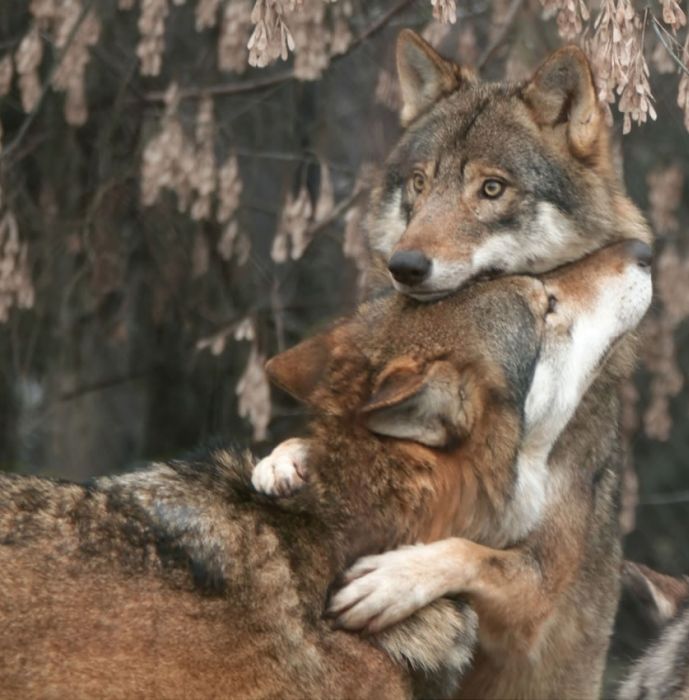|
|
Gray Wolf
|
Evolution
The most likely ancestral candidate of the gray wolf is Canis lepophagus, a small, narrow skulled North American canid of the Miocene era, which may have also given rise to coyotes. Some larger, broader skulled C. lepophagus fossils found in northern Texas may represent the ancestral stock from which true wolves derive. The first true wolves began to appear at the end of the Blancan North American Stage and the onset of the early Irvingtonian. Among them was Canis priscolatrans, a small species closely resembling the red wolf, which colonised Eurasia by crossing the Bering land bridge. The new Eurasian C. priscolatrans population evolved into Canis etruscus, then Canis mosbachensis.
This primitive wolf closely resembled the modern southern wolf populations of the Arabian Peninsula and South Asia, which were once distributed in Europe in the early Quaternary glaciation until about 500,000 years ago. C. mosbachensis evolved in the direction of Canis lupus, and recolonised North America in the late Rancholabrean era. There, a larger canid species called Canis dirus was already established, but it became extinct 8,000 years ago after the large prey it relied on was wiped out. Competition with the newly arrived gray wolves for the smaller and swifter prey that survived may have contributed to its decline. With the extinction of dire wolves, gray wolves became the only large and widespread canid species left.
|
|









